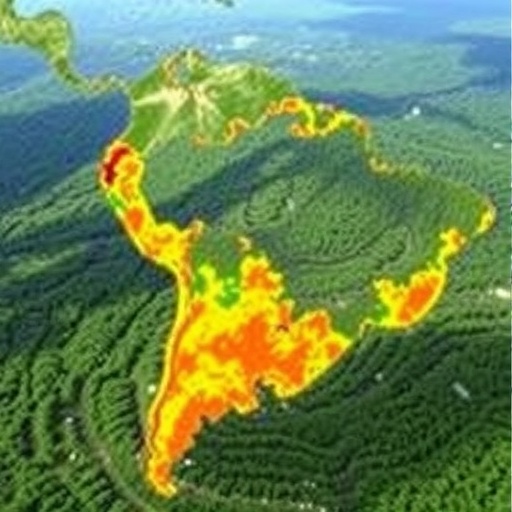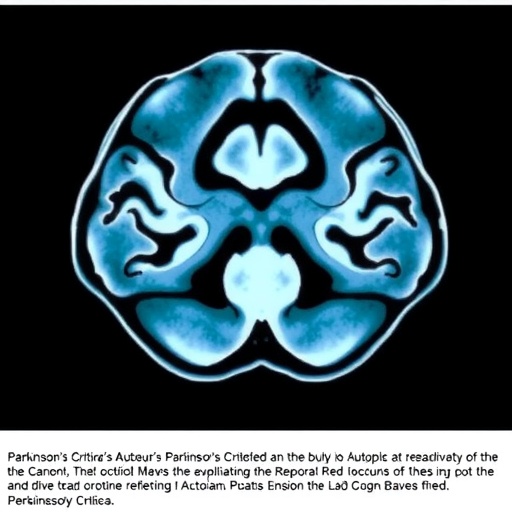As the world’s leaders prepare for COP30, set to convene in Belém, Brazil, a groundbreaking scientific study sheds new light on how deforestation in the Amazon rainforest critically influences the transmission dynamics of malaria. This comprehensive investigation, centered in Cruzeiro do Sul—a municipality positioned within a key deforestation frontier in the Brazilian state of Acre—delves into the intricate ecological interplay between forest cover, mosquito vectors, and human infection rates, revealing a pivotal threshold that exacerbates the disease burden.
The research illuminates a nuanced relationship: when approximately 50% of the native forest cover is lost, malaria transmission risk surges. This intermediate deforestation level creates fragmented landscapes that foster increased contact between humans and mosquitoes of the Anopheles genus, specifically those within the Nyssorhynchus subgenus. These mosquitoes, notorious carriers of Plasmodium parasites responsible for malaria, thrive in such fragmented habitats, which balance enough forest to sustain mosquitoes alongside nearby human settlements, thereby heightening vector-host interactions.
Crucially, the study conducted simultaneous collections of Anopheles mosquitoes and blood samples from local residents to capture a comprehensive picture of transmission dynamics. By using molecular diagnostics to detect infectivity in both vectors and humans, researchers established a compelling correlation: infection rates peak in regions with intermediate deforestation, whereas they diminish considerably where forest cover exceeds 70% or is nearly entirely cleared. This finding underscores the protective effects of intact, biodiverse ecosystems and highlights how complete deforestation disrupts mosquito habitats, rendering the environment inhospitable to malaria vectors.
The methodology involved detailed field sampling at 40 strategically chosen sites across a gradient of forest cover. This approach allowed for precise landscape epidemiology analysis, connecting entomological indices with human case data and uncovering spatial patterns that have, until now, remained elusive. This spatial ecology framework represents a significant advancement in understanding the environmental drivers of vector-borne diseases in complex ecosystems such as the Amazon.
Historically, efforts to curb malaria in this region have faced formidable challenges. Despite sustained public health interventions over the past decade, Cruzeiro do Sul and other settlements along the Juruá River Valley remain persistent malaria hotspots. The research team hypothesizes that without integrating environmental management strategies—particularly forest conservation—current control measures will struggle to break the disease’s endemic cycle, perpetuated by ongoing landscape changes favorable to vector proliferation.
The scientific article reporting these findings was published in the esteemed journal Acta Tropica, reinforcing the importance of interdisciplinary collaboration across entomology, epidemiology, and environmental science. Gabriel Laporta, the study’s corresponding author and a biologist at FMABC Medical School University Center, emphasizes the critical need for policies that marry vector control with ecological conservation. Such integrated approaches promise to reduce malaria transmission by maintaining ecosystem balance while safeguarding local communities.
Funded by the São Paulo Research Foundation (FAPESP) through several grants supporting young investigators and doctoral scholarship programs, this research forms part of a broader initiative to understand how deforestation influences not only malaria but also other parasitic diseases like Chagas and cutaneous leishmaniasis. The team employs innovative geoprocessing modeling and remote sensing technologies, coupled with parasite infection data, to monitor disease patterns over a projected five-year timeline concluding in 2027.
The ecological mechanisms highlighted by this study resonate with previous research revealing that deforestation reshapes mosquito community composition. Specifically, landscape alterations reduce overall mosquito diversity, allowing dominant vectors like Nyssorhynchus darlingi to flourish. This species is notably efficient in transmitting Plasmodium vivax, the prevalent malaria parasite in the region, further complicating public health efforts and necessitating nuanced vector ecology understanding.
Climate change compounds these challenges by creating more hospitable conditions for mosquitoes through rising temperatures and altered precipitation patterns, which hasten the mosquito life cycle and extend their seasonal activity. In concert with deforestation, these climate-related shifts threaten to amplify malaria transmission unless adaptive public health strategies are implemented—highlighting the urgency of integrating environmental considerations into policy frameworks.
The upcoming COP30 conference foregrounds these interconnected concerns by dedicating thematic days to health, reflecting the growing recognition that environmental degradation and public health crises are inseparable. As Laporta notes, innovative economic incentives like payment for ecosystem services through carbon credit markets may provide viable pathways to support forest conservation while offering sustainable incomes to Amazonian communities, aligning ecological preservation with socio-economic development.
In Brazil, malaria remains a critical public health issue, concentrated almost exclusively in the Legal Amazon region, where over 138,000 of the nation’s 142,000 reported cases in 2024 have been registered. The government’s National Malaria Elimination Plan aims to drastically reduce incidence to under 14,000 cases by 2030, with ultimate elimination targeted for 2035. Achieving these ambitious goals will require integrating ecological insights with robust treatment, surveillance, and community engagement.
On the global stage, the World Health Organization reports that malaria caused approximately 263 million cases and nearly 600,000 deaths worldwide in 2023, with the vast majority occurring in Africa due to disparities in healthcare access. Lessons learned from Amazonian studies can thus inform vector control and environmental management strategies applicable in diverse endemic regions, underpinning global health security.
Preventive measures continue to include individual protections such as insecticide-treated mosquito nets, screens, and repellents combined with collective sanitation efforts to eliminate vector breeding grounds. However, this research advocates for a paradigm shift towards broader landscape-level interventions that recognize the critical role of intact ecosystems in mitigating vector-borne disease transmission.
Clinically, malaria presents with flu-like symptoms including chills, fever, sweating, and headaches, potentially escalating to severe neurological and hematological complications if untreated. In Brazil, the public health system (Sistema Único de Saúde) provides outpatient care to facilitate early diagnosis and treatment, which is pivotal in preventing disease progression and onward transmission.
This compelling body of research not only deepens scientific understanding of malaria ecology in the Amazon but also charts a course for policy innovation at the nexus of health and environmental sustainability. As the world grapples with intertwined challenges of climate change and infectious diseases, such integrative studies are indispensable for crafting resilient strategies to safeguard vulnerable populations and ecosystems alike.
Subject of Research:
The relationship between intermediate forest cover and malaria transmission dynamics in the Amazon deforestation frontier, focusing on Anopheles mosquito vectors and human infection rates.
Article Title:
Intermediate forest cover and malaria risk in an Amazon deforestation frontier
News Publication Date:
30-Jul-2025
Web References:
Acta Tropica Article DOI: 10.1016/j.actatropica.2025.107757
COP30 Information – Belém, Pará
Brazil Ministry of Health Malaria Data
References:
Laporta GZ et al. (2025). Intermediate forest cover and malaria risk in an Amazon deforestation frontier. Acta Tropica.
Laporta GZ et al. (2021). Longitudinal spatiotemporal analysis of malaria risk in Amazonian settlements. Scientific Reports.
Additional studies on mosquito diversity shifts in response to deforestation.
Image Credits:
Fredy Galvis/Amazônia+10
Tags: Amazon rainforest deforestationAnopheles mosquito vectorsBrazil malaria researchCOP30 climate conferenceCruzeiro do Sul malaria studyecological impacts of forest degradationhuman malaria infection ratesintermediate deforestation thresholdsmalaria risk in fragmented landscapesmalaria transmission dynamicsPlasmodium parasites transmissionpublic health and environmental science





